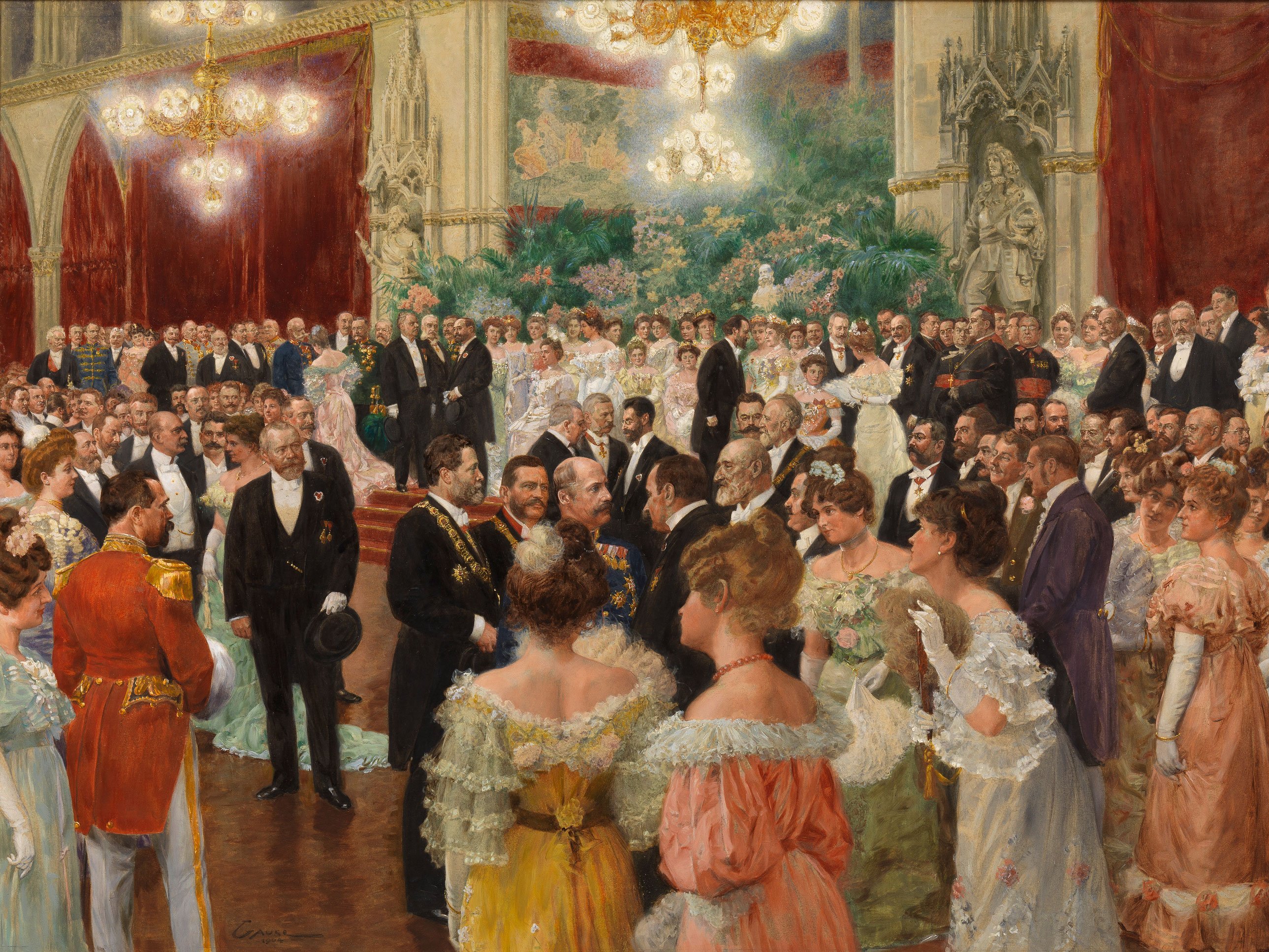
1. Origins
The ancestors of the waltz include folk dances with names such as the Dreher, Weller and Spinner – i.e. couple dances with spinning as a distinguishing feature. For a long time, it was assumed that the Bavarian-Austrian Ländler was the direct predecessor of the waltz, but research now regards the two dances more as siblings that have (further) developed parallel to each other. By the way, the Ländler probably made its most famous appearance in the 1965 musical film The Sound of Music.
2. “Congress Dances”
So the exact roots of the waltz are disputed. However, what is certain is that the waltz began its social conquest about 200 years ago, when Europe was re-shaped at the Congress of Vienna in 1814/15. To make the congress participants’ stay as pleasant as possible, balls were held all over the city.
3. “Walzer” (waltz) comes from “Walzen” (rollers)
What at first sounds less than elegant is actually the origin of the word “waltz”. The cylindrical body of a roller served as a model for the rotating movement. The term has also become established in other languages, such as waltz in English and valse in French. In this context, the word was first used in 1748, albeit as part of a ban on dancing by the governor of Upper Austria ...
4. Café Rebhuhn
Café Rebhuhn was a popular meeting place for the liberal-minded middle classes even before the Congress of Vienna. After the 1848 revolution in Vienna, the landlord kept up with the times and offered his clientele ever new attractions, such as Joseph Lanner’s dance band. On the viola of this band was none other than Johann Strauss the Elder, who was able to observe how the cosy couple dances gradually changed into the exciting waltz.
5. Scandalous!
The waltz continued to develop and the dynamics of the turns eventually became so ecstatic that they were difficult to control. The dancing couples had to hold tight to each other to be able to keep up with the tempo. Moreover, the waltz made no distinction between high or low rank or standing – a threatening circumstance for any authority. In a time when you could be imprisoned for a thoughtless remark in the tavern, this dance was leaps and bounds ahead of the social mores of the time.
6. “Unfortunately not by me”
The objectionable waltz became more and more complex over the years, new figures and step sequences emerged, and suitable pieces were composed. The supreme masterpiece of waltz art was probably Johann Strauss’ masterpiece An der schönen blauen Donau (The Blue Danube) from 1867. In its purely orchestral version, it became the epitome of Viennese ballroom sophistication and won the respect of all “serious” composers – Brahms, for example, himself a gifted composer of dances and waltzes, scribbled the famous words “Unfortunately not by me” on the opening bars of the Blue Danube.
7. A glorious anachronism
At the beginning of the 20th century, Munich’s Richard Strauss became the waltz king for opera connoisseurs. Towards the end of his life, he dedicated two waltzes to his home town: first an “Occasional Waltz” and then an expanded “Memory Waltz”. The waltzes in his Rosenkavalier, which premiered in 1911 and was set in the time of Austrian empress Maria Theresa, were a wonderful anachronism. The empress could never have danced a single bar of a waltz, because it didn’t exist during her lifetime.
8. At high speed …
At 60 bars per minute, the Viennese Waltz is the fastest of the ballroom dances. It has been danced at competitions since 1932 and was finally included as a ballroom dance on a par with other dances in the World Dance Programme in 1963.
9. … to world cultural heritage
As well as the Viennese Waltz, there are also relatives such as the “Paris Waltz” or the even faster Russian Waltz. And, of course, the slow or “English” waltz. As a result of its long tradition and significance, the Viennese Waltz – played, danced or sung – has even been part of UNESCO’s Intangible Cultural Heritage since November 2017.
10. »Alles Walzer«
When “Alles Walzer” is announced at balls, the dance floors are open to everyone who wants to waltz. In one Viennese ball season there are up to 450 balls with half a million guests – the whole city waltzes. Incidentally, anyone who dances twelve waltzes on such an evening spins around 2,500 times, dances 5,000 bars and covers a distance of 5 kilometres!
11. Next level: Waltz reverse turns
The Viennese waltz can be danced with natural turns (to the right) as well as with reverse turns (to the left) – the latter, however, is much more difficult because in the reverse turn, the third waltz step means crossing the feet (and not closing them). As it is more difficult to change to reverse turns if you have already mastered natural turns, it’s better to start with both from the beginning!